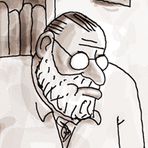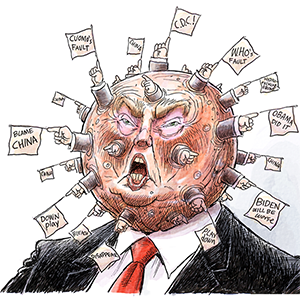John Romano: Rays trade deadline was not about who left or arrived but who stayed
Published in Baseball
TAMPA, Fla. — This was not a salary dump. That seems important to point out.
Instead, it felt more like a yard sale. A cleaning-out of the closet. The Rays got rid of some assets that weren’t in their long-term future and, in return, got a handful of mostly cheaper replacements with a longer shelf life.
They traded a light-hitting catcher who was likely to decline his 2026 option (Danny Jansen) and made two other deals to acquire another light-hitting catcher (Nick Fortes) and a Triple-A catcher (Hunter Feduccia) with decent minor league numbers. They traded a talented but maddeningly inconsistent starting pitcher (Taj Bradley) for an elite reliever (Griffin Jax). And they dealt a free agent-to be starting pitcher (Zack Littell) while acquiring a similar free agent-to be starting pitcher (Adrian Houser) elsewhere.
You might even make the argument that — because Jax has the potential to be a life preserver for a drowning bullpen — the Rays are a slightly better team on Friday morning than they were on Thursday morning.
And when you consider the epic teardown at the 2024 trade deadline, that feels positively optimistic.
So will it make a difference in 2025? Probably not.
The Rays need to leapfrog four teams just to get the final wild-card spot, and that doesn’t seem likely considering how poorly they played in July and how devastating it was to lose Jonathan Aranda to an injury during Thursday’s loss to the Yankees.
But it could make a difference in 2026.
You see, the Rays had three veterans — Yandy Diaz, Pete Fairbanks and Brandon Lowe — with team options in the $11-12 million range in 2026, and they kept all three. That is not an insignificant detail. Considering the Rays are below .500 and have one of the tiniest payrolls in the game, there was all kinds of speculation that Tampa Bay would opt for a significant rebuild at the trade deadline.
Instead, they bet on the idea that they can return to the postseason in 2026 when they are back to full strength. The players they gave up in recent days were likely to head out the door in October (Littell and Jansen) or were growing less valuable (Bradley, Jose Caballero and Curtis Mead) by the hour. It might feel like rearranging deck chairs on the Titanic, but there was logic to these decisions.
In a way, it perfectly encapsulates the enormous burden the Tampa Bay front office works under.
Because they spend less than almost all of their colleagues, the Rays need to be better than everyone else when it comes to player acquisitions. That means finding hidden gems on the waiver wire (Littell) or through free agency (Edwin Uceta). That means nondescript trades (Jake Bauers for Yandy Diaz) that turn out to be steals. That means getting a quality return (Ryan Pepiot and Jonny DeLuca) when trading a bona fide star (Tyler Glasnow).
The problem with this business model is there is absolutely no margin for error.
And, after years of mostly stellar deals, the Rays have had some trades go awry. Isaac Paredes for Christopher Morel? Yikes. Kyle Manzardo for Aaron Civale? Not good. Nelson Cruz for Joe Ryan? Disaster. Jose Alvarado, Nate Lowe, Blake Snell? Stink, stank, stunk.
Turns out, being a baseball genius is harder than it looks.
More than anything, that explains why the Rays have struggled in 2024-25. Because Civale was a bust, the rotation needed an upgrade. Because none of the players acquired for Snell amounted to anything, the Rays were still looking for a catcher and more pitching. Because Cruz was an all-in gamble, the Rays lost a quality starting pitcher in the minimum-salary range. All of those deals forced the Rays to reallocate their resources to make up for the shortfall.
(Well, all of that plus Wander Franco.)
This doesn’t mean the front office has screwed up. It means the law of averages has caught up to them. No matter how smart you are, it’s incredibly difficult to outsmart 29 other franchises year after year.
When things go wrong for the Yankees, they just throw more money at the problem. The Rays don’t have that luxury. And this trade deadline is a nice reminder of that harsh reality.
Teams in a similar position in the wild-card race had vastly different responses. The Twins and Diamondbacks went into sell mode. The Phillies, Mariners and Padres doubled down on their teams.
The Rays, instead, tried to walk the narrow line between improving their fortunes in the future while still keeping a glimmer of hope alive in 2025.
It wasn’t entirely satisfying, but it was better than a white flag.
____
©2025 Tampa Bay Times. Visit tampabay.com. Distributed by Tribune Content Agency, LLC.







Comments